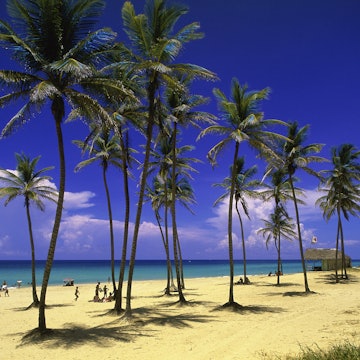

Getty Images
Overview
From lush forests to a dynamic music scene, Cuba is a country of indefinable magic. Puff on Cuban cigars or cruise down the Havana streets in a classic car for a true taste of the good life.
Plan your trip with Guide, an AI travel planner!
Create a personalized trip itinerary in seconds using artificial intelligence.
Must-see attractions
Planning Tools
Expert guidance to help you plan your trip
Best Things to Do
Get ready to uncover the buoyant and sophisticated magic of Cuba. Here are the top things to do on your visit.
Read full article
Best Places to Visit
Cuba's top destinations delight travelers with music-filled cities, chill resorts and remote natural beauty.
Read full article
Best Time to Visit
Check this seasonal guide to Cuba's lively festivals, top beach weather and budget prices to find the best time for your visit.
Read full article
Things to Know
Cuba can confuse even hardened travelers, from currency questions to whether those cheap cigars are worth it. Here's a no-fail guide.
Read full article
Transportation
Want to travel around in Cuba? See the best of the island with our guide to transportation.
Read full article
Visa Requirements
Travelers often have questions about the visa process for Cuba and whether US citizens can even visit. Here’s our guide to Cuba’s visa requirements.
Read full article
Money and Costs
You can still see the best of Cuba even without a huge budget. Here are our tips on getting the most out of your money.
Read full article
Traveling with Kids
If you’re planning to travel to Cuba with kids, you’ll find music, carnivals, watersports, horse riding, classic American car rides and much more.
Read full article
Best Road Trips
From beaches to mountains to historic cities and more, these road trips around Cuba offer access to the best of this enchanting island.
Read full article
Get a book. Get inspired. Get exploring.
in partnership with getyourguide




















